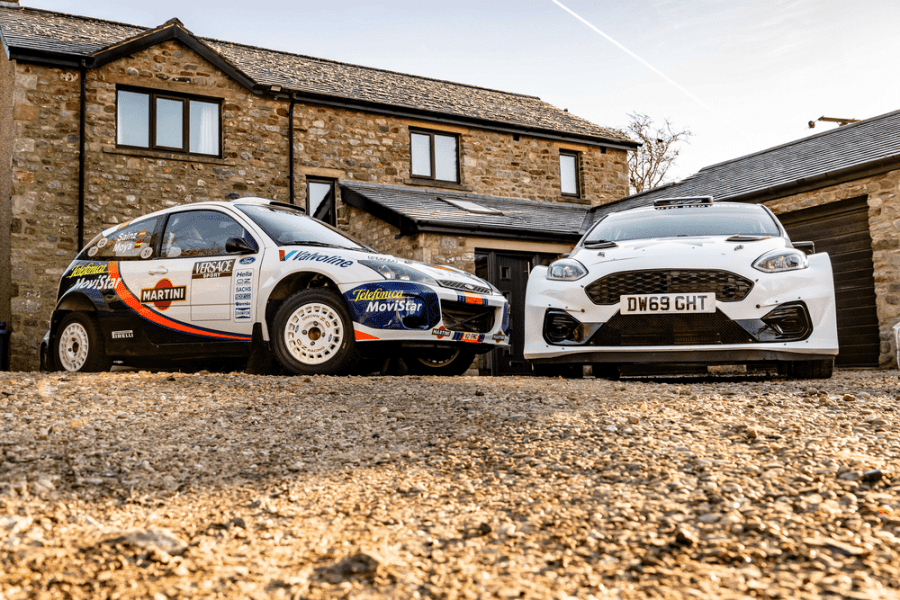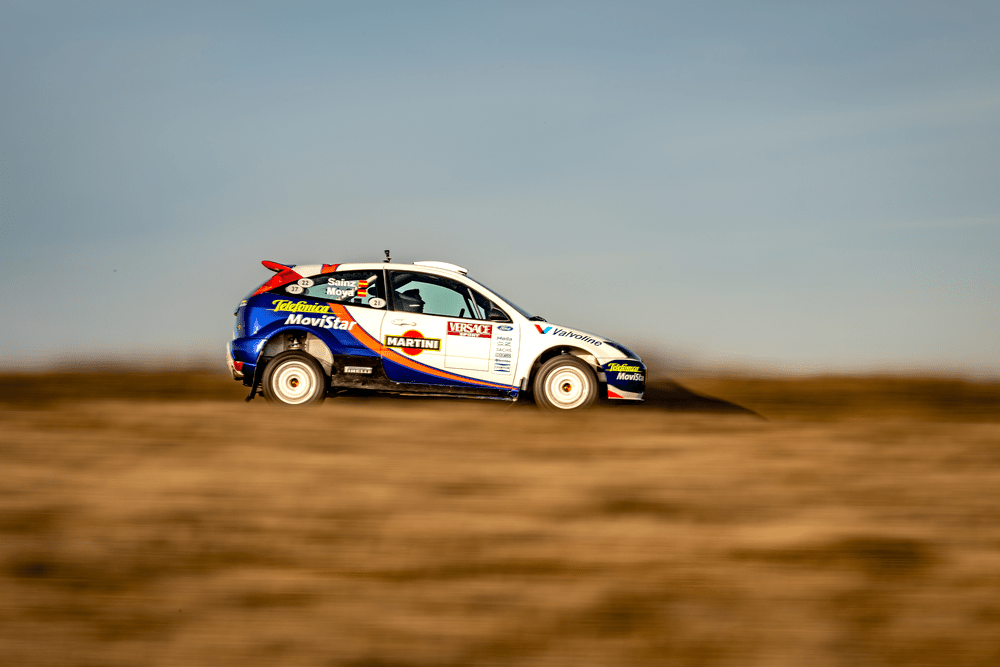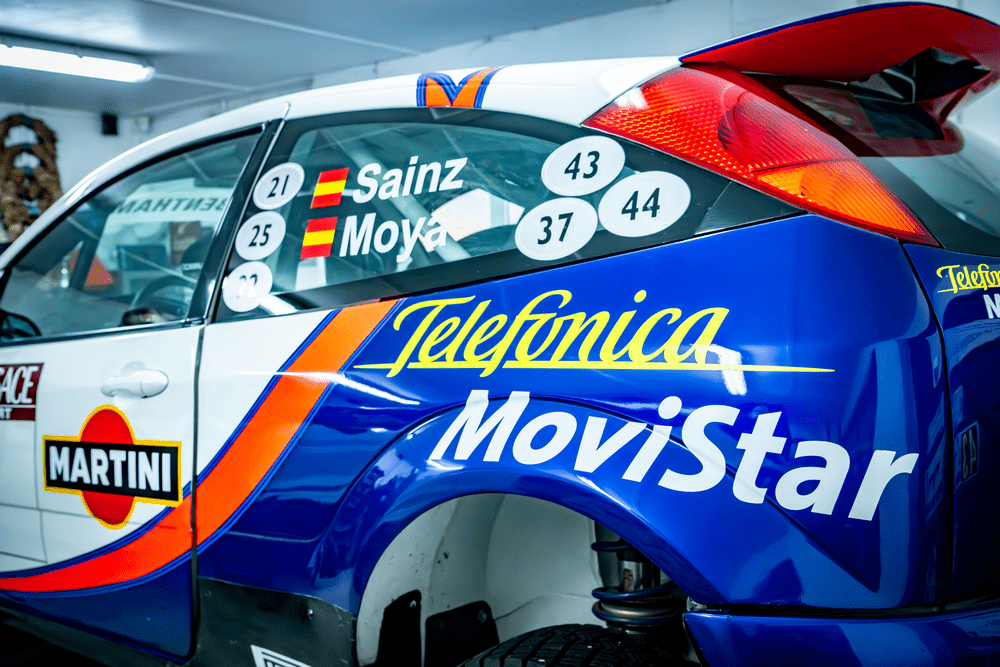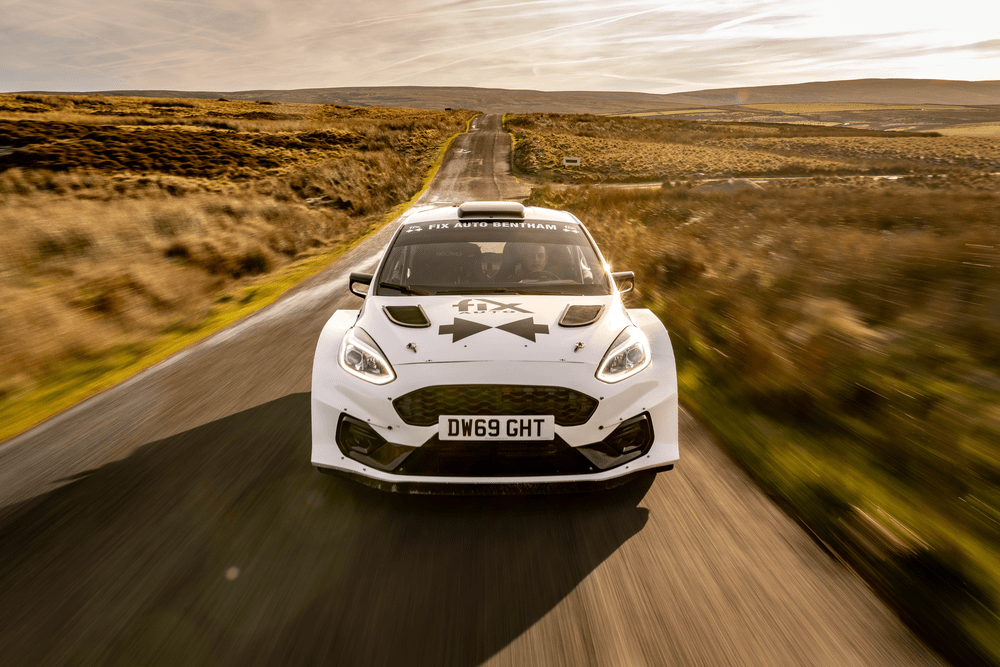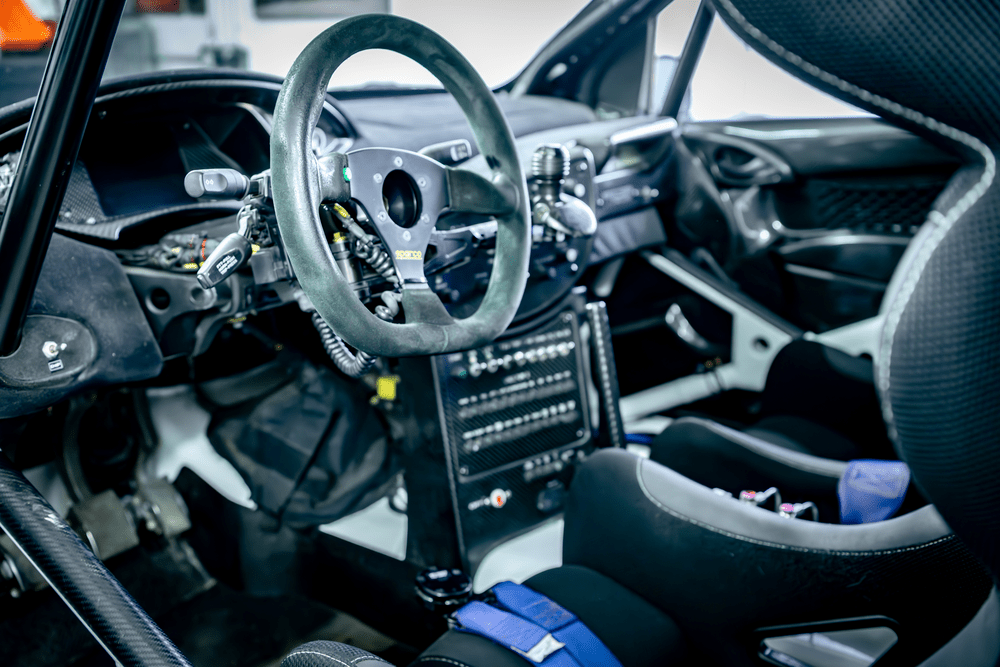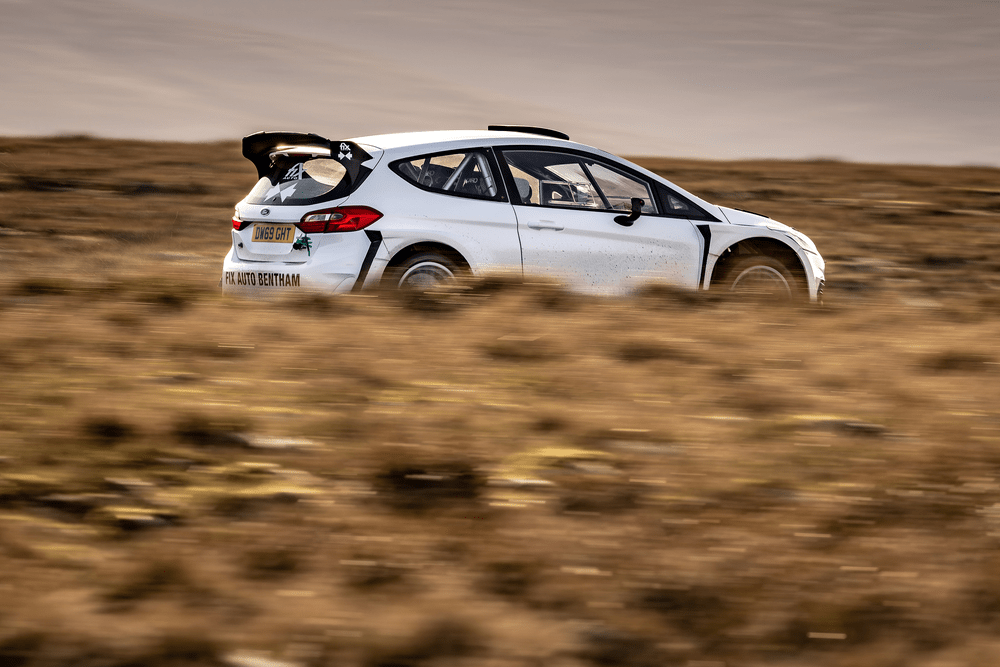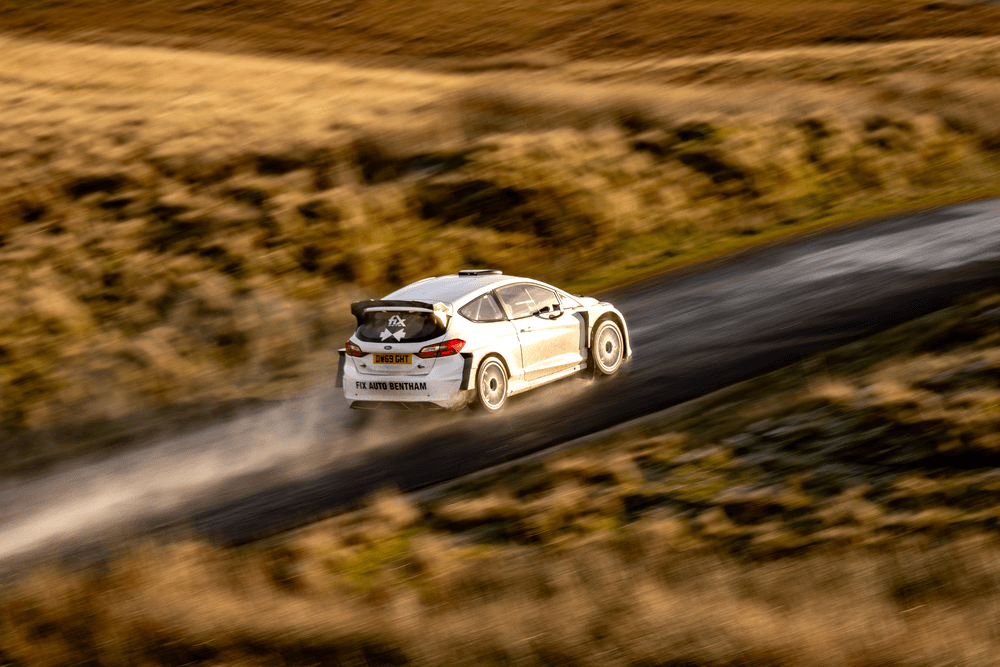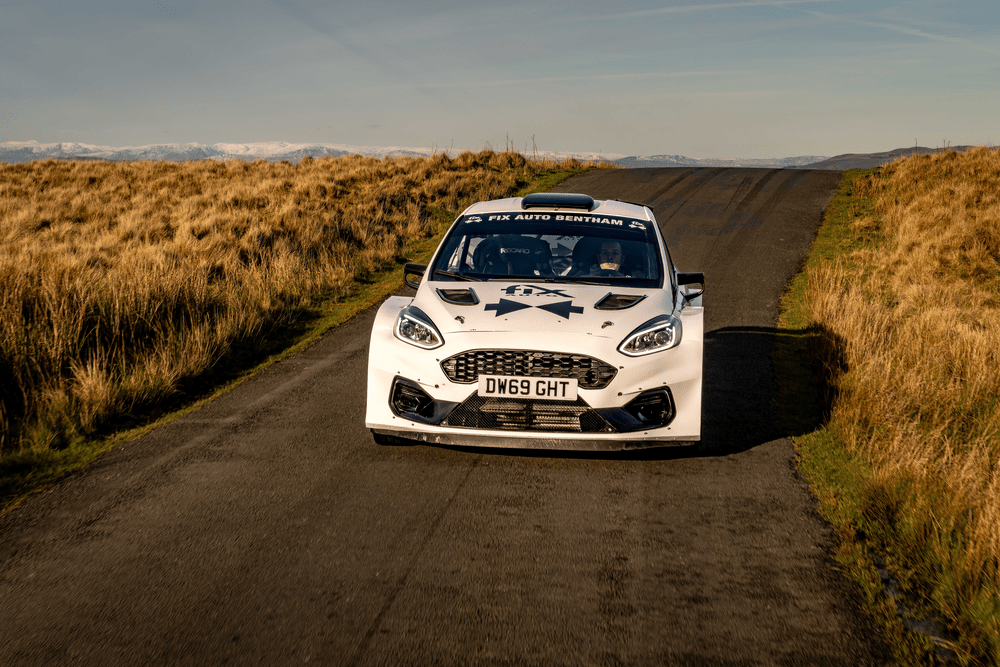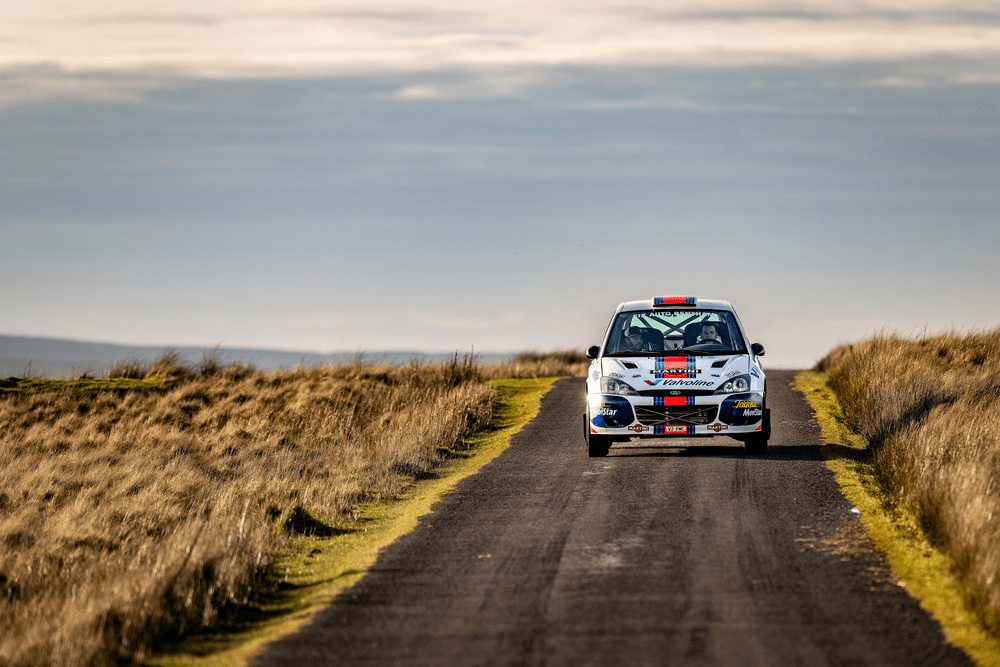When it comes to world rallying, few brands have left as big of a mark as Ford. Over the years, Ford has produced a line-up of iconic rally cars that have dominated the World Rally Championship. But how do icons from the early 2000s compare with today’s rally cars? We compare the Focus WRC with the modern Mk8 Fiesta Rally2 to find out…
The Evolution of Rally Cars
The Ford Focus WRC
The Ford Focus WRC made its debut in 1999 and it quickly became a force to be reckoned with. Developed by M-Sport, the official motorsport division of Ford, the Focus WRC showcased cutting-edge technology and engineering prowess. Indeed, it was Ford’s first ‘proper’ WRC car, designed specifically to meet the new regulations after the ageing Escort Cosworth.
Powered by a turbocharged 2.0-liter Zetec engine, the Focus WRC produced an impressive 300-plus horsepower. Its all-wheel-drive system provided exceptional traction, allowing drivers to tackle various terrains with ease. The multilink rear suspension setup that made the Focus such a great handling car on the road also has its roots in the WRC design. Homologation rules forbid significant changes to suspension mounting points, so the road cars benefited as a result.
Piloted by legends
Under the guidance of legendary drivers like Carlos Sainz and Colin McRae, the Ford Focus WRC made an instant impact. Colin McRae finished 3rd in the car’s first-ever competitive event at Monte Carlo in 1999. He was later disqualified for the infamous water pump homologation debate, but it showed the car’s inherent speed. McRae went on to win the gruelling Safari Rally a few weeks later. And then claimed victory again in Portugal in the same year.
With its powerful engine and advanced suspension system, the Focus WRC became a formidable force on the rally stage. In 2000, McRae and Sainz finished on the podium no fewer than 9 times – doing so together on four occasions! The following year was similar story – with five podiums for both Sainz and McRae. In 2002 (the final year of the iconic Martini livery), the Focus notched up another six podium finishes – three of those being outright victories.
The Ford Fiesta Rally2
Fast forward to the present day, and we have the Ford Fiesta Rally2, the latest iteration of Ford’s rally car line-up. The top-tier WRC category still exists (now called Rally1), and M-Sport enjoyed lots of success with the Mk8 Fiesta, including winning both driver and manufacturer’s titles in 2017, and winning the drivers championship again in 2018. When the rules changed to the current Rally1 specifications that include the use of hybrid technology, M-Sport switched to the Puma.
The Fiesta is still a formidable machine and is the weapon of choice for many competitors in the Rally2 Championship. Unlike Rally1, with its big budgets that only manufacturers can afford to compete in, Rally2 regulations include a price cap to keep costs under control. But think this is a ‘budget’ form of motorsport. It just isn’t. The Fiesta Rally2 still features an improved suspension system, more aggressive aerodynamics, and a refined chassis, resulting in enhanced handling and agility.
Tech Specs
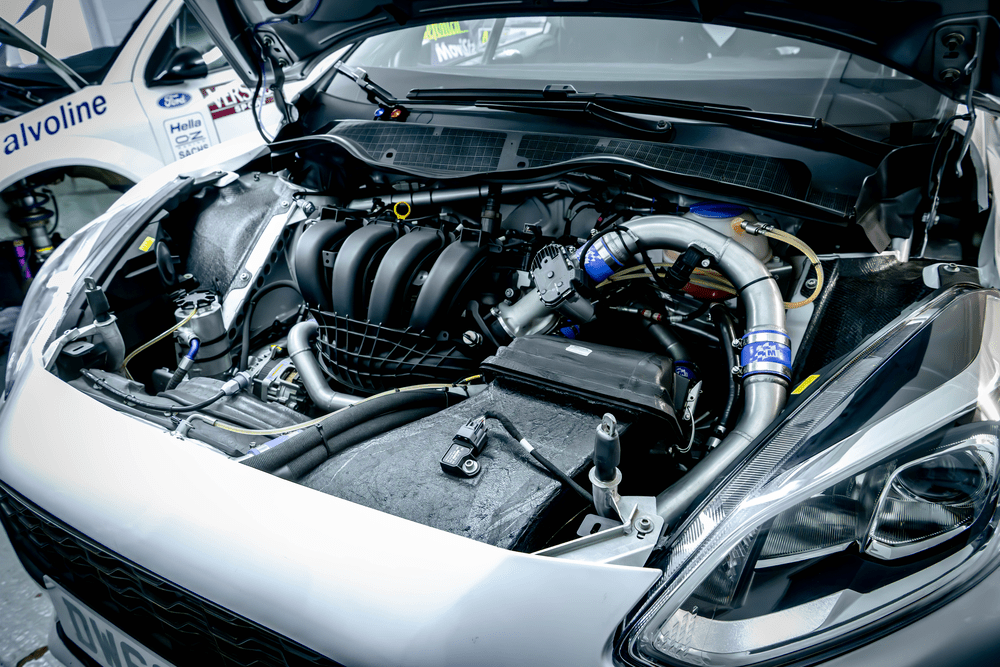
Engine
The Ford Focus WRC has a turbocharged 2.0-liter engine, based on the Zetec motor found in road cars. Initially built by Mountune and later by Cosworth, the spec includes a Garrett turbo with a 34mm restrictor. Power is rated at 300bhp at 6500rpm, with peak torque of 550Nm at 4000rpm.
On the other hand, the Ford Fiesta Rally 2 is powered by a modern direct-injection, turbocharged 1.6-liter engine. It uses a smaller 32mm turbo restrictor and delivers around 280 horsepower at 6000rpm and 475 Nm of torque at 4000rpm. While the Fiesta Rally2 has a smaller engine, advancements in turbocharging technology and modern direct fuel injection allow it to generate impressive performance figures.
Both cars feature anti-lag systems to ensure the turbo is always ready to provide boost. The WRC car uses a more complex ‘fresh air’ system, while the Rally2 car uses an electronic throttle body and jacks open the throttle slightly when the system is activated. Both systems do the same thing – they allow combustion to occur in the exhaust to provide maximum energy to keep the turbo spinning. On the WRC’s fresh air system, air is taken from the cold side of the turbo and plumbed directly into the exhaust manifold. Whereas on the Rally2’s system, the extra air has to pass through the intercooler, inlet, and cylinder before it reaches the exhaust where it combusts. The fresh air anti-lag system is what gives rally cars that distinctive chirping noise, too.
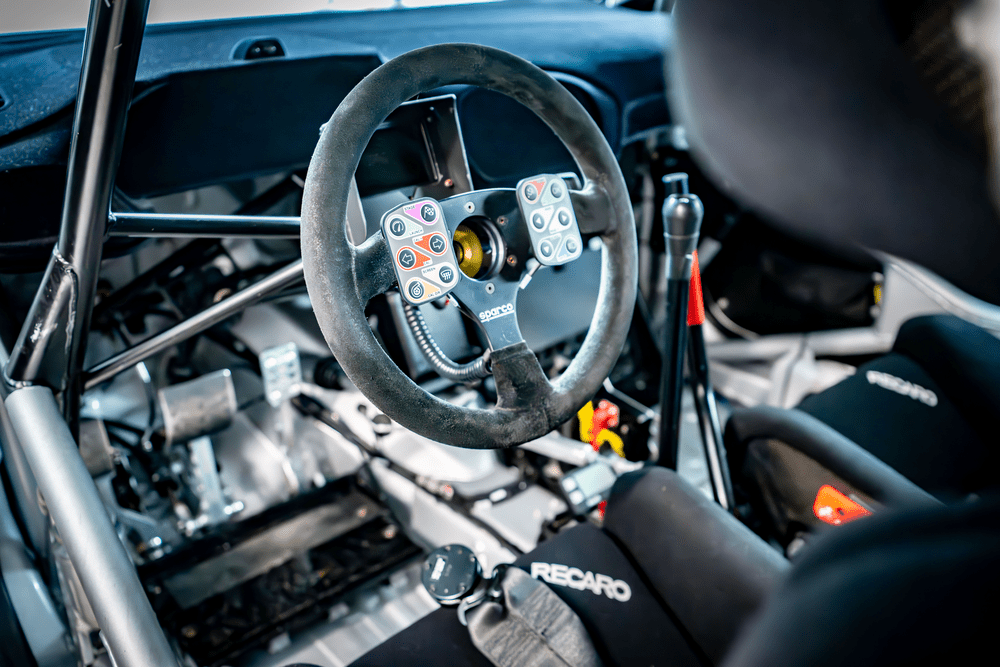
Drivetrain
Both the Focus WRC and the Fiesta Rally 2 feature an all-wheel-drive system, providing exceptional traction and stability on various surfaces. Both have sequential gearboxes: a six-speed Xtrac in the Focus and a five-speed Sadev unit in the Fiesta.
However, the Focus WRC utilises a fully active differential system. This allows the ramp angles of the front, rear, and centre differentials to be altered electronically. An ECU controls the settings, providing full tunability of the drivetrain.
Active differentials are incredibly expensive, therefore they have been outlawed for Rally2 specifications. The Fiesta employs mechanical limited-slip differentials, which still provide excellent performance but at a lower cost.
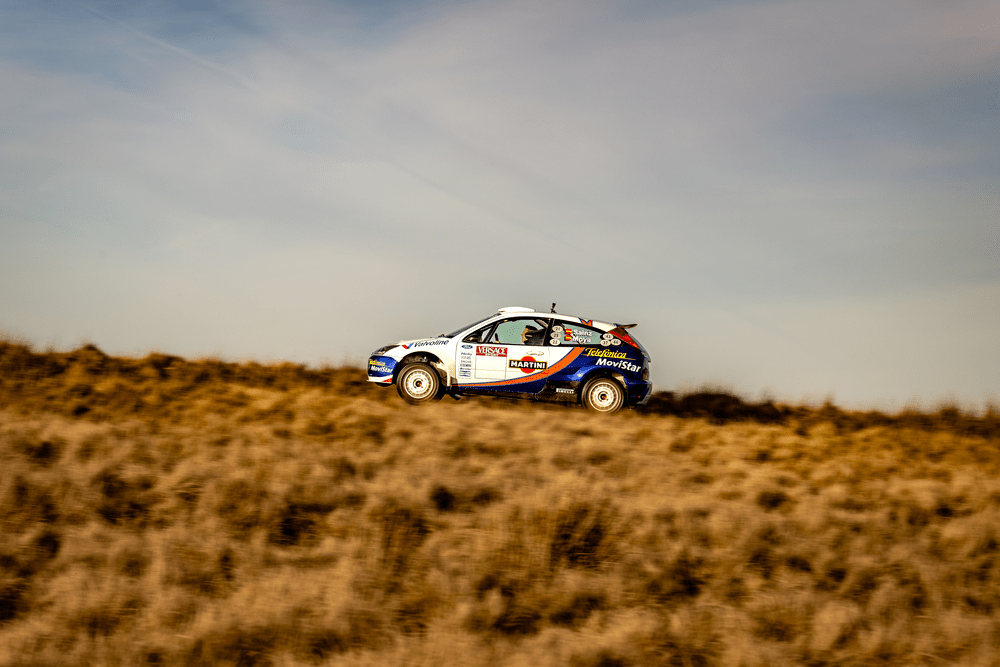
Weight and Aerodynamics
Surprisingly, given their 20-year gap in age and different regulations to comply with, the Focus WRC and the Fiesta Rally2 weigh exactly the same. They both tip the scales at 1230kg.
The Focus competed in a time when the manufacturers wanted the rally cars to closely resemble those on dealer forecourts, and as such the WRC car is the same overall dimensions as the road car.
However, with rules relaxed and more aggressive aerodynamics employed, the Fiesta Rally2 has little in common with its road legal counterpart. The Fiesta Rally2 is a full 50mm wider than the Focus. It’s shorter too (4065mm compared to 4152mm of the Focus), giving a squarer and more stable platform.
And that’s without the aero package. Much more than just a rear wing, the aero kit on the Rally2 car includes wider fenders, redesigned bumpers, and even aerodynamic wing mirrors.
This results in enhanced downforce and reduced drag.
Performance on the Stages
When it comes to comparing the performance of the Ford Focus WRC and the Ford Fiesta Rally 2 on the track, it’s important to consider the changes in regulations and competition. The WRC has seen several rule changes over the past 20 years, affecting everything from engine displacement to aerodynamic modifications.
What we really need is someone who has driven both the Focus WRC and Fiesta Rally 2 in anger. Someone who can offer a direct comparison of what each car feels like when strapped in and belting across the stages. Enter David Wright.
In the hot seat: David Wright
David is a keen and very talented rally driver. But he’s not a works-backed professional racer. He runs a local branch of Fix Auto UK in his home town of Bentham in North Yorkshire. “Owning a bodyshop certainly comes in handy when rallying doesn’t quite to plan,” he laughs.
Having competed at numerous events in an ex-Carlos Sainz Focus WRC (V2 FMC) belonging to a family friend, David has recently acquired a modern Fiesta Rally2 to compete in tarmac rallying events. That makes him perfectly poised to compare these two impressive fast Fords.
David explains: “They are two very different machines. The Focus was designed and built using the very latest technology and active differentials. That makes the car surprisingly easy to drive compared to the Rally2. Coupled with the extra torque from the larger capacity engine, the Focus is a bit more forgiving and is always fast.
“By contrast, you need to get hold of the Fiesta by the scruff of the neck and really throw it around. The mechanical diffs and torque deficit mean you need to be on-song all the time to extract maximum performance,” he continues.
“You can take the Focus across incredibly hostile terrain like the Safari and Acropolis, and you know it’s tough enough to cope. And you can feel that behind the wheel. Whereas the Fiesta isn’t tough enough to survive events like those, on tarmac rallies the Fiesta feels like a go-kart compared to the Focus. It’s so nimble and precise. And the Fiesta Rally2 can easily be as quick, if not faster, than the Focus WRC on the right surface.”

Which is best: Focus WRC vs Fiesta Rally2
While the Focus WRC dominated the WRC during its prime, the Fiesta Rally2 is designed to excel in the Rally2 championship, which features slightly less powerful cars than the top-tier Rally1 cars. But this allows for closer competition and, reiterating David’s comments, puts a greater emphasis on driver skill and strategy.
Both cars offer exhilarating performance, but the Fiesta Rally2 showcases the advances made in rally car design and technology. The Ford Focus WRC and the Ford Fiesta Rally2 represent two different eras in the evolution of rally cars. While the Focus WRC will always hold a special place in rallying history, the Fiesta Rally2 proves that innovation and progress are constant in the world of motorsport.
The value of the WRC car these days means it just isn’t worth the risk of David using it in competition regularly. But rally fans will still get the opportunity to see used in anger at events like Goodwood Festival of Speed. And given his record of winning the rally stage outright, David isn’t one to potter around doing exhibition runs. Oh no, this will be spitting flames and spraying dirt everywhere as onlookers are immediately transported back to the early 2000s and the era of playing Colin McRae Rally on the PlayStation.
To answer the question, ‘Which is best?’ we don’t know. On one hand, you have the technical advances and rawness of the Rally2. On the other, you have powerful nostalgia and a car that was designed with no expense spared.
Which do you think is best?
Photos: Mantis Pro Media

